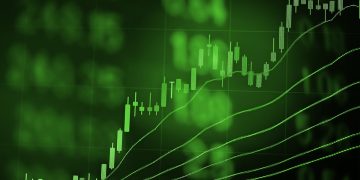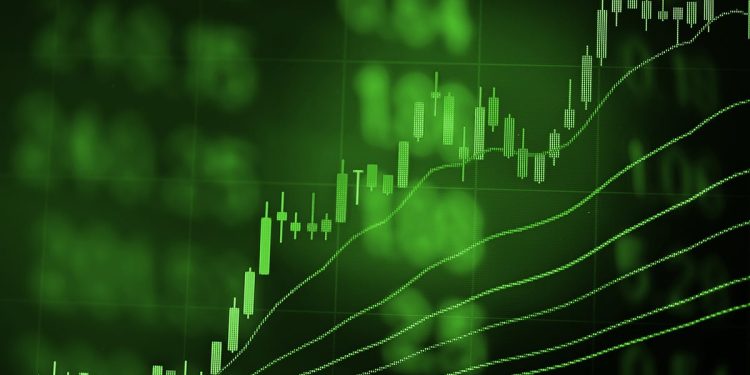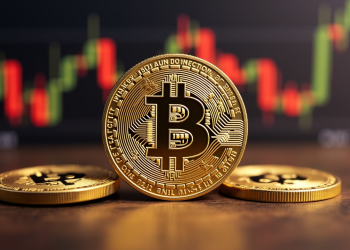TLDR
- Bitcoin jumped 8% to $82K after Trump announced a 90-day tariff pause for all countries except China
- Trump raised tariffs on Chinese imports to 125% effective immediately
- Over 75 countries contacted US officials to discuss trade matters
- Stock market indices surged with S&P 500 rising 9% and Nasdaq gaining 10%
- Tech stocks like Tesla (14%), Nvidia (12%), and Apple (11%) saw major gains
President Donald Trump announced a 90-day pause on tariffs for most countries while raising tariffs on Chinese imports to 125%, triggering a broad rally across financial markets with Bitcoin jumping 8% to $82,000.
The announcement came hours after goods from nearly 90 nations became subject to stiffer tariffs imposed by the United States. Trump cited that more than 75 countries had contacted US officials to negotiate after he unveiled his new tariffs last week.
“Based on the lack of respect that China has shown to the World’s Markets, I am hereby raising the Tariff charged to China by the United States of America to 125%, effective immediately,” Trump wrote on Truth Social. He added, “I have authorized a 90-day PAUSE, and a substantially lowered Reciprocal Tariff during this period, of 10%, also effective immediately.”
Market Response
The news sparked an immediate market rally. The S&P 500 rose 9%, while the Nasdaq gained 10%.
Major tech stocks posted strong gains with Tesla surging 14%, Nvidia rising 12%, and Apple climbing 11%. Other tech giants including Microsoft, Meta, and Amazon each rose 8%, while Google added 6%.
Bitcoin responded with an 8% jump to $82,000. Other cryptocurrencies and commodities like gold and oil also surged as investors quickly re-embraced risk assets.
The rally puts the S&P 500 on track for its largest single-day gain in five years, according to market observers.
BTC Price
Trump’s Trade Policy Shifts
Trump initially announced the tariffs on April 2, planning a 10% base global tariff effective April 5, followed by higher reciprocal tariffs on around 60 nations starting April 9.
The sudden scaling back of these plans, except for China, represents a major shift in the administration’s approach. Commerce Secretary Howard Lutnick confirmed he was present when Trump drafted the announcement.
“Scott Bessent and I sat with the President while he wrote one of the most extraordinary Truth posts of his Presidency,” Lutnick wrote on X. “The world is ready to work with President Trump to fix global trade, and China has chosen the opposite direction.”
Treasury Secretary Scott Bessent issued warnings to other nations not to retaliate against the US. He emphasized that any country willing to negotiate would be heard and potentially rewarded with better trade terms.
China-US Tensions
While Trump paused most global duties, his decision to raise tariffs on China to 125% marks an escalation in US-China trade tensions. The move came after China earlier on Wednesday said it would increase its tariff rate for imports from the US to 84%.
“At some point, hopefully in the near future, China will realize that the days of ripping off the U.S.A., and other Countries, is no longer sustainable or acceptable,” Trump wrote in his statement.
When asked outside the White House, Treasury Secretary Bessent declined to call the situation a US-China trade war. He did say, “China is the most imbalanced economy in the history of the modern world, and they are the biggest source of the US trade problem.”
Economists had previously warned that Trump’s original global tariff plan could trigger a severe global recession. Major investors cautioned about worse outcomes, including a possible “economic nuclear winter.”
Wednesday’s 90-day pause effectively reduces the tariff regime to what many investors thought Trump would implement in the first place.
The tariff pause provides a window for negotiations with the 75+ countries that contacted US representatives. During this period, a reduced reciprocal tariff of 10% will be in effect.
Trump’s announcement mentioned these countries had reached out to various US departments including Commerce, Treasury, and the Office of the United States Trade Representative to discuss trade, tariff barriers, currency manipulation, and non-monetary tariffs.
The President noted that these countries “have not, at my strong suggestion, retaliated in any way, shape, or form against the United States,” which factored into his decision to pause the higher tariffs.













